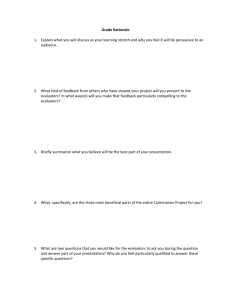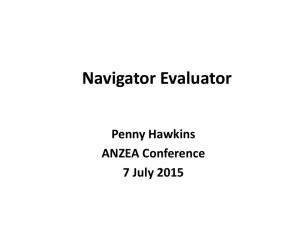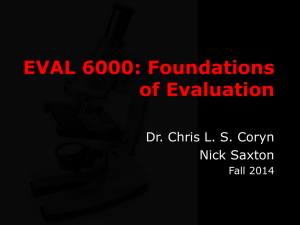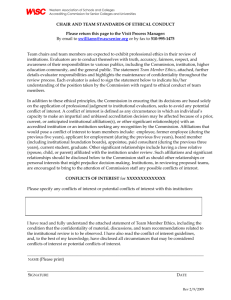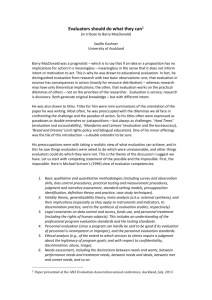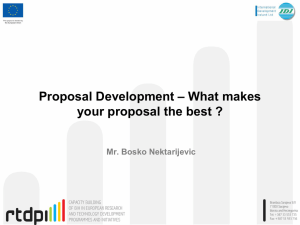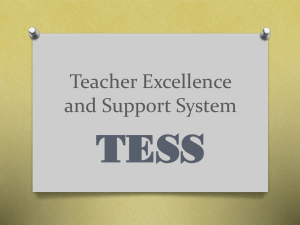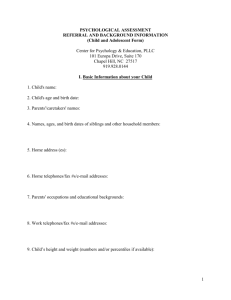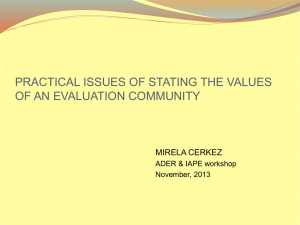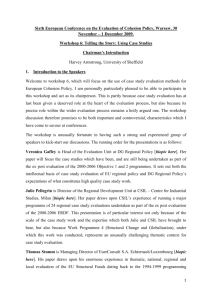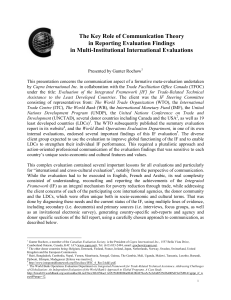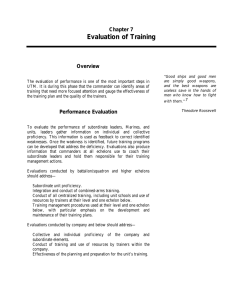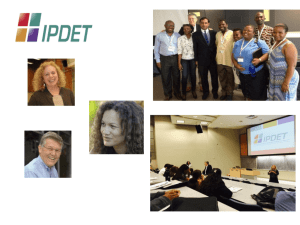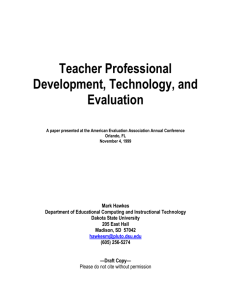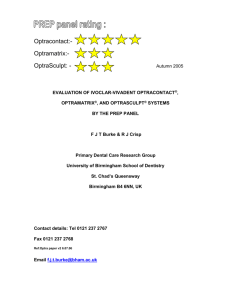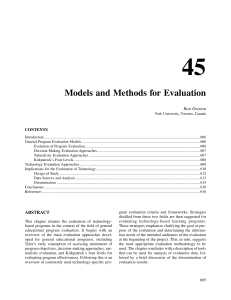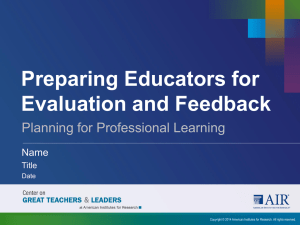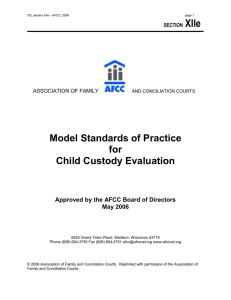Effective Use of Evaluation Findings
advertisement
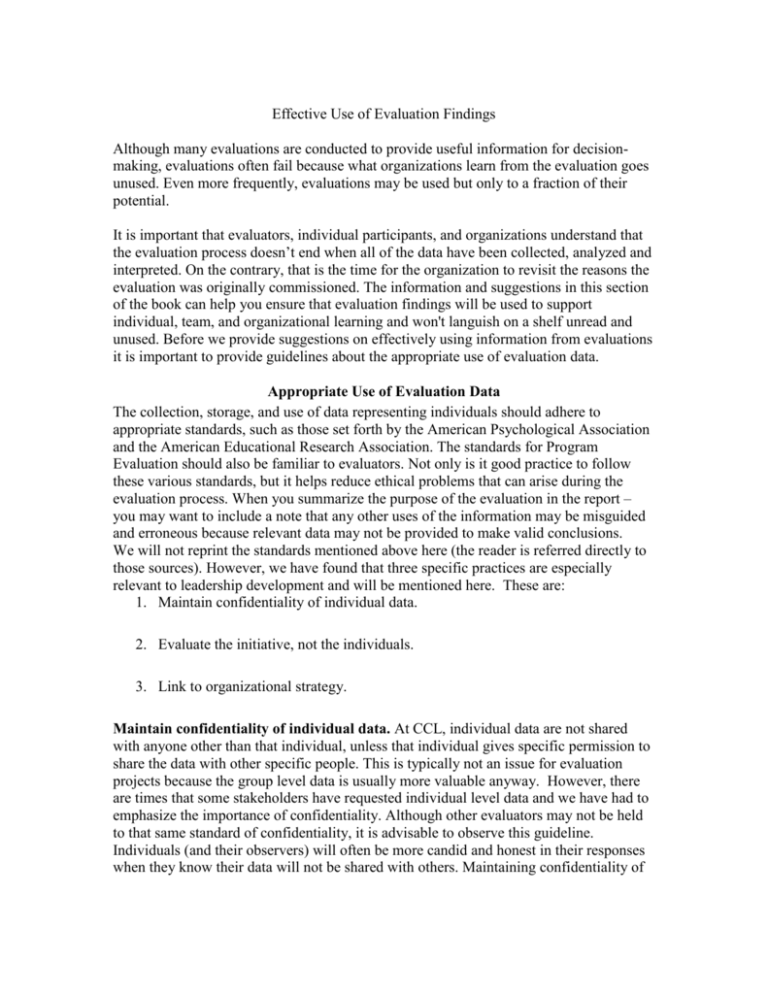
Effective Use of Evaluation Findings Although many evaluations are conducted to provide useful information for decisionmaking, evaluations often fail because what organizations learn from the evaluation goes unused. Even more frequently, evaluations may be used but only to a fraction of their potential. It is important that evaluators, individual participants, and organizations understand that the evaluation process doesn’t end when all of the data have been collected, analyzed and interpreted. On the contrary, that is the time for the organization to revisit the reasons the evaluation was originally commissioned. The information and suggestions in this section of the book can help you ensure that evaluation findings will be used to support individual, team, and organizational learning and won't languish on a shelf unread and unused. Before we provide suggestions on effectively using information from evaluations it is important to provide guidelines about the appropriate use of evaluation data. Appropriate Use of Evaluation Data The collection, storage, and use of data representing individuals should adhere to appropriate standards, such as those set forth by the American Psychological Association and the American Educational Research Association. The standards for Program Evaluation should also be familiar to evaluators. Not only is it good practice to follow these various standards, but it helps reduce ethical problems that can arise during the evaluation process. When you summarize the purpose of the evaluation in the report – you may want to include a note that any other uses of the information may be misguided and erroneous because relevant data may not be provided to make valid conclusions. We will not reprint the standards mentioned above here (the reader is referred directly to those sources). However, we have found that three specific practices are especially relevant to leadership development and will be mentioned here. These are: 1. Maintain confidentiality of individual data. 2. Evaluate the initiative, not the individuals. 3. Link to organizational strategy. Maintain confidentiality of individual data. At CCL, individual data are not shared with anyone other than that individual, unless that individual gives specific permission to share the data with other specific people. This is typically not an issue for evaluation projects because the group level data is usually more valuable anyway. However, there are times that some stakeholders have requested individual level data and we have had to emphasize the importance of confidentiality. Although other evaluators may not be held to that same standard of confidentiality, it is advisable to observe this guideline. Individuals (and their observers) will often be more candid and honest in their responses when they know their data will not be shared with others. Maintaining confidentiality of individual data builds evaluator credibility and trust that the process will be used to evaluate the initiative, not the individual. Evaluate the initiative, not the individuals. Leadership development is intended for individual, team, organizational, and community improvement. The evaluation data collected should be used for purposes of examining ways to enhance the initiative itself, changes in participants' leadership knowledge and skills, relevant changes in the organization and community, and relevant factors in the organization community related to the success of the initiative. Evaluators should encourage organizations not to use the collected data to make judgments about the performance of individuals, such as for performance appraisals and administrative decision-making regarding individual performance. The type of information needed to evaluate individual performance is often different from that collected as part of an evaluation and is held to a different set of legal and professional standards (see the Standards on Personnel Evaluation). The design of the evaluation should promote this value by aggregating any individual data collected to the group level. Link to organizational strategy. Evaluation should be part of strategic intent. Evaluation is not intended to be a valueless exercise to which people are asked to give time, energy and resources but which is not used for productive purposes. Just as leadership development should be linked to organizational strategy, so should evaluation be strategically important and contribute to the achievement of organizational goals and learning agenda. Four Critical Activities There are four critical activities, described below, that help organization members apply what they've learned from the evaluation. In their book Evaluative Inquiry for Learning in Organizations Preskill & Torres discuss four activities that an evaluation can induce and which are critical to making best use of an evaluation. By carrying out these four activities, there is a greater likelihood that: the evaluation’s recommendations will be carefully considered and translated into action; the actions taken based on the evaluation findings will be realistic and sensitive to the organization’s culture and context; any potential barriers or obstacles to change can be identified and managed to allow for successful implementation of resulting actions; those who are to be affected by the changes will be involved in planning the changes; and the organization will use evaluation findings as part of its ongoing efforts related to continuous improvement and organizational learning. The four activities are: 1. Effectively communicate the results to a broad audience, using a variety of media 2. Identify specific courses of action. 3. Develop a detailed action plan. 4. Monitor the action plan’s implementation. Communicating results. Most evaluations end result in a final report that is submitted to the primary stakeholder or client. All too often only a few people read that final report and so the amount of change occurring as a result of the evaluation is limited. Evaluators can counter this tendency by carefully considering their reporting strategy, keeping the goal of evaluation use in mind. Evaluation reports that are credible, relevant (both to stakeholders interests, expectations and communication preferences), accurate, and fair are utilized more often. For example, evaluators should consider multiple methods for communicating and reporting the process of the evaluation and its results. A broader communication strategy can help to more widely distribute the lessons arising from developmental initiatives. It also emphasizes the idea that the results of an evaluation provide information to be used in an organizational learning process, that the evaluation results are not the final goal – learning is. Informing a variety of audiences about the findings of the evaluation and how the results will be used increases the credibility of the evaluation effort, communicates to stakeholders that they were heard and that the results will be acted on, and prepares stakeholders for future evaluations by demonstrating the potential value of evaluation. Communication channels can include oral or multimedia presentations, executive summaries/flyers, memos, case studies, faxes, postcards, e-mail or voice mail messages, photo essays, scenarios, role plays, chart essays, holding questions and answer sessions, web pages, PDF files, FAQ sheet newsletters, bulletins, and poster sessions. Another way evaluators can make results useful is to tailor the timing, content and communication channel for the information they share with the stakeholder groups. Take into account the stakeholder group’s background, communication preferences, and information needs – much of this information should be available from the initial planning phase of the evaluation. If the information is not available – consider asking for it. What information do stakeholder groups want? When do they need/want the information? How do they best receive information? It may be wise to offer interim reports prior to the release of a final report. For instance, company executives may not have time for or interest in a complete and detailed account of findings – but may benefit from an overview of results and information about the specific questions of interest to them – information that helps them make the changes/decisions they need to make. [START BOX] Basic Elements of a Final Evaluation Report Executive Summary Purpose of Evaluation Description of Initiative and Sample Caveats about the Evaluation Overview of Processes Used and Analysis Summary of Data (with multiple subsections) Conclusions and Recommendations Appendices [END BOX] It goes without saying that correct grammar, spelling and punctuation are important. The report should be clearly written and to the point. Avoid words that may be unfamiliar to the intended audience. If you must use a technical or jargon term – define it in layperson terms. If appropriate use graphs or narratives to illustrate a point. The report should be attractive and professional. The report should not be overwhelming, with reams of information on each page. Using headings and page numbers help orient the reader. When appropriately used, color can add interest and clarity to the report. Identify specific courses of action. The most useful evaluation reports provide both critical findings and recommended actions. The actions must be specific and must follow logically from the results themselves. A good process to use in identifying specific recommendations involves these four steps, each of which will be addressed below: 1. Determine the changes (if any) that the data indicate. 2. Examine possible revisions to or reframing of the initiative 3. Explore the need for follow up to the leadership development initiative. 4. Gather the stakeholders. Determine the changes (if any) that the data indicate. One possible outcome of a leadership development initiative is that it had the impact, both in terms of quality and quantity, that was expected and hoped for. In that case, no remedial action is necessary, but the organization might want to consider a next step in the developmental process for its employees. Stakeholders may want to celebrate the success of the initiative as a positive example. Another possible outcome is that the data show the initiative needs to be revamped or revised to achieve maximum impact. In this case, the specific areas and suggestions for revision should be identified and prioritized by relevant stakeholder groups, based on the evaluation findings. Still another outcome might be that participants gain a number of new insights, but aren't able to employ much of what they learn due to systemic obstacles in their work environment or a lack of understanding about how to transfer what they've learned back into their own situations at home and work. Evaluators can help identify barriers, but it is primarily the organization’s responsibility to address the issues. Depending on the nature of the obstacles, subsequent training or some other organizational development interventions may be needed. For example, if the leadership development initiative involved an organizational culture or climate survey, the information gathered from the survey may indicate the work the organization needs to do. The organization may want to update reward systems, policies, or communication processes to better reflect the vision of the organization – or it may need to review and revise its leadership development agenda. Perhaps the leadership competencies being developed don’t align with its business strategy or culture. Of course it is best if these issues are examined prior to the leadership development initiative, but there are times that changes in the organization or other contextual factors may occur during the initiative, or may not be readily apparent prior to the time the initiative begins. It is important to maintain attention on issues of alignment throughout the initiative to best ensure its success. Organizational Development practitioners may need to be consulted if there is a substantial incongruity among systems, process, outcomes, etc. Examine possible revisions to or reframing of the initiative It is possible that an evaluation’s findings might indicate a need for minor or major revision to the leadership development initiative, additional learning needs for individuals or groups, a need to improve specific organizational elements to support learning, or ways in which to increase an intervention’s appeal or effect. Explore the need for follow-up to the leadership development initiative. After the results of your evaluation are in, it's a good time to explore the need for addition followup with leadership development initiative participants. For example, coaching may be in order for some or all participants, and some participants may benefit more from additional specific skills-based training. In considering follow-up activities, the organization moves itself toward a systems approach to leadership development, an improvement over event-based initiatives. Gather and consult with the stakeholders. The most effective means for determining how to use what is learned from the evaluation is to bring together everyone with a stake in the evaluation, including the evaluator, others who might be affected by changes made as a result of the findings, and those responsible for implementing the intended changes. The best time to do this is after sharing evaluation results, allowing for some time or stakeholders to think about the results and correct any misunderstandings or errors in the report. Stakeholders should be encouraged to use data to respond to any inaccuracies they feel are in the report – this creates a shared responsibility for report accuracy. If evaluation results illustrate the shortcomings of a specific group in particular (such as the need for participants’ managers to become better developmental coaches for their employees) – it may be wise to allow that group time to develop a course of action before bringing in all the stakeholders. The purpose is to allow the group of managers time to form a response and take ownership of the situation rather than putting them in a defensive and reactive position. Developing an action plan. Once key stakeholders have discussed potential actions, the next step for the stakeholder group is to develop an action plan. An action plan is a tool for organizing the implementation of the lessons that result from an evaluation study. It may be that not all stakeholders need to be involved in the development of the action, though it is often helpful to as much involvement as possible. Who needs to be involved in the development of the action plan will be informed by where actions is needed and who has the responsibility and authority to enact change in that area. The action plan should outline specific tasks and identifies individuals who are responsible for carrying them out, and include required resources for implementing specified actions and a timeline for carrying out these actions. In short, an action plan documents: What needs to happen and why? (what are the specific actions to be taken? How are they indicated by the results?) Who will make it happen (what group or individuals are responsible for implementing the action? Who else need to be involved? (what additional groups or individuals are needed, for example, to participate in the action, to provide approval for it, or as support resources?) What barriers are anticipated? (what obstacles to implementation may exist? How will they be addressed?) In what order does it need to happen? (do the steps need to occur in a particular order, or can they occur less linearly?) When does it need to happen by? (is there a deadline for initiating and completing each step of the action plan?) How will we know it has happened? (what indicators will be observed to determine whether each step of the action plan has been initiated and completed?) How will success be determined? (what indicators will be observed to determine the success of each step in the action plan?) The action plan that results from this effort should be distributed among all those involved with the intended actions so that everyone is clear about their role in implementing the plan. Monitoring the Action Plan's Implementation As the organization begins to implement the action plan, it is critical that progress is monitored and communicated. Monitoring the action plan means following up with individuals and groups responsible for specific actions, as indicated in the plan, to see how well they are progressing and what, if anything, needs to be modified. One way to monitor the plan is to periodically convene the group who developed the action plan and have each member describe how well the actions are being implemented and what help is needed to continue the process. If the members of the group are geographically dispersed, you can conduct these monitoring sessions using Internet capabilities, videoconferencing systems, shared websites, or email/memo methods. Regardless of the method used, all of those involved should become aware of the extent to which the plan is being implemented, and what impact the changes are having on individuals, groups, and the organization. The group might even decide that, as a result of making certain changes, additional evaluation needs have surfaced. Using Evaluation to Create Organizational Change and Learning Evaluation measures more than impact, the process has the potential to create change in (and for) individuals and their organizations. What does creating change mean? Certainly, the results of an evaluation study should point to areas of leadership development initiatives that are in need of revision. In addition, they can indicate areas (such as systems and processes) in the organization that aren't supporting the leadership development initiatives. These changes can affect the entire organization, groups of people, or individuals, depending on the type of change and the effect it has at various levels, and also provide an opportunity for extended evaluation research and organizational learning. In addition to identifying gaps in, barriers to and supports for leadership development, evaluation can be used to help gather possible solutions and solicits ideas for improving an organization’s leadership development effort. An important outcome of evaluation is the individual and group learning that occurs as a result of participating in the evaluation and from using the evaluation’s results. When individuals and groups reflect upon their experiences and share what they’ve learned with others in the organization, it can be said that the organization, as a whole, learns. The challenge, however, is in finding ways to capture and share this learning. One strategy is to develop an organizational memory database that organization members can input and access on an as-needed basis. Another is to create a discussion area on the organization’s intranet system. Yet another is to publish the lessons revealed in the evaluation's results, and through participation in the developmental initiative, in the organization’s internal newsletter and bulletins. Each of these methods is a vehicle for carrying information throughout the organization so employees can learn from each other —a hallmark of organizational learning.
